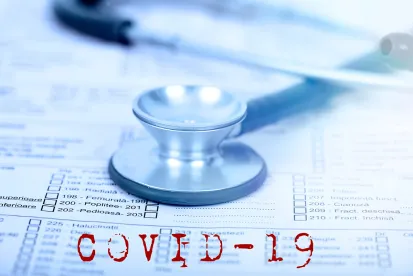On March 25, 2020 the U.S. Senate unanimously voted to approve the Coronavirus Aid, Relief and Economic Security Act (CARES Act). The CARES Act provides an unprecedented level of relief and support, and includes the following provisions.
For workers impacted by the pandemic:
Expanded unemployment insurance, including an additional $600 per week in such compensation for up to four months and federal funding to the self-employed, sole proprietors and independent contractors who are not usually eligible for such compensation. Under this bill, the federal government also provides certain incentives to states (e.g., fully funding the first week of unemployment compensation for states that suspend their waiting week provisions). An amendment to ensure that additional unemployment insurance did not result in an individual receiving unemployment compensation that is more than the amount of wages the individual was earning prior to becoming unemployed failed to pass.
For participants in qualified retirement plans or IRAs who are financially impacted by the pandemic:
The ability to withdraw up to $100,000 in emergency funds from their retirement plan accounts or IRAs without early distribution penalties. These withdrawals may (but are not required to) be repaid over a period of three years. Participants may also take loans of up to $100,000 (up from the usual limit of $50,000). In addition, participants are not required to take required minimum distributions for the 2020 calendar year.
For individual taxpayers:
A refundable tax credit ($1,200 for singles and $2,400 for joint taxpayers), plus $500 for each child. This begins to phase out at $75,000 of adjusted gross income for singles and $150,000 of adjusted gross income for joint taxpayers, and phases out entirely at $99,000 and $198,000, respectively. Generally, 2019 or 2018 tax returns will be used to calculate the rebate.
For business taxpayers:
-
A 50 percent refundable payroll tax credit on wages paid up to $10,000 during the pandemic for certain employers. With conditions, the credit is available for employees retained but not currently working due to the pandemic for employers of more than 100 employees and for all employee wages for employers of 100 or fewer employees.
-
Delay of employer-side Social Security payroll tax payments, with 50 percent owed on December 31, 2021 and 50 percent owed on December 31, 2022.
-
Expansion of the net interest deduction limitation (which currently limits a business taxpayer’s ability to deduct interest paid to 30 percent of EBITDA) to 50 percent of EBITDA for 2019 and 2020. This will increase liquidity for those businesses with interest-bearing debt during the pandemic.
For small businesses (fewer than 500 employees), nonprofit organizations, sole proprietorships and self-employed individuals:
A $349 billion Paycheck Protection Program, to help such entities make payroll and cover other expenses, including rent, utilities, mortgage interest and interest on other debt obligations, from February 15, 2020 to June 30, 2020. Eligible entities may borrow up to $10 million, based on a formula tied to 2 1/2 times average monthly payroll, covering employees making up to $100,000 per year. The loans are eligible for deferral of principal and interest payments for not less than six months or more than one year. Also, loans may be forgiven up to an amount used to pay payroll, rent, utilities and mortgage interest during the eight weeks following the loan disbursal. Such loan forgiveness amount will be reduced by a reduction in the workforce or reduction in wage and salary levels by more than 25 percent. Temporary workforce and wage and salary reductions from February 15, 2020 through 30 days after the passage of the CARES Act will not reduce the amount forgiven so long as such workforce and wage and salary reductions are eliminated by June 30, 2020.
For primarily larger businesses, as well as states and municipalities:
A $454 billion loan program called the Exchange Stabilization Fund. This includes $25 billion in lending for airlines, $4 billion in lending for air cargo firms and $17 billion in lending for businesses deemed critical to U.S. national security. Notably, program participants whose securities are publicly traded may not engage in stock buybacks for the duration of the loan plus one year, no participants may pay dividends on common stock for the same period, and all participants must retain at least 90 percent of their employment level as of March 24, 2020. There are other terms and conditions, including limiting employee compensation and severance. This program will be overseen by a Congressional Oversight Commission and a special inspector general.
For financial institutions:
-
Providing temporary accounting relief from troubled debt restructurings beginning March 1, 2020 until 60 days after the end of the pandemic.
-
Modifying the Dodd-Frank Act to give the FDIC authority to establish a temporary program to guarantee bank debt.
-
Giving the option to delay implementation of the current expected credit loss standard until the earlier of December 31, 2020 and the end of the pandemic.
-
Reducing the community bank leverage ratio from nine percent to eight percent until the earlier of December 31, 2020 and the end of the pandemic.
-
Temporarily waiving national bank lending limits until the earlier of December 31, 2020 and the end of the pandemic.
For educational institutions:
Supplemental spending of $14 billion, as well as provisions temporarily excusing payments by borrowers with federally-held loans (without interest accruing) until September 30, 2020, relaxing or clarifying current regulations on behalf of borrowers (including as to Pell Grant recipients), and providing that canceled classes would not count against a student’s satisfactory academic progress calculation.
For the health care system:
Supplemental spending that includes over $117 billion for hospitals and veterans’ care, as well as provisions to address supply shortages, coverage of diagnostic testing, support for health care providers, telehealth service access, drug creation for treatment of the coronavirus, and Medicare and Medicaid extensions.
For state and municipal governments:
A $150 billion Coronavirus Relief Fund for expenditures incurred to deal with the pandemic. The fund would be allocated by population proportions, with a minimum of $1.25 billion for each state.






 />i
/>i

